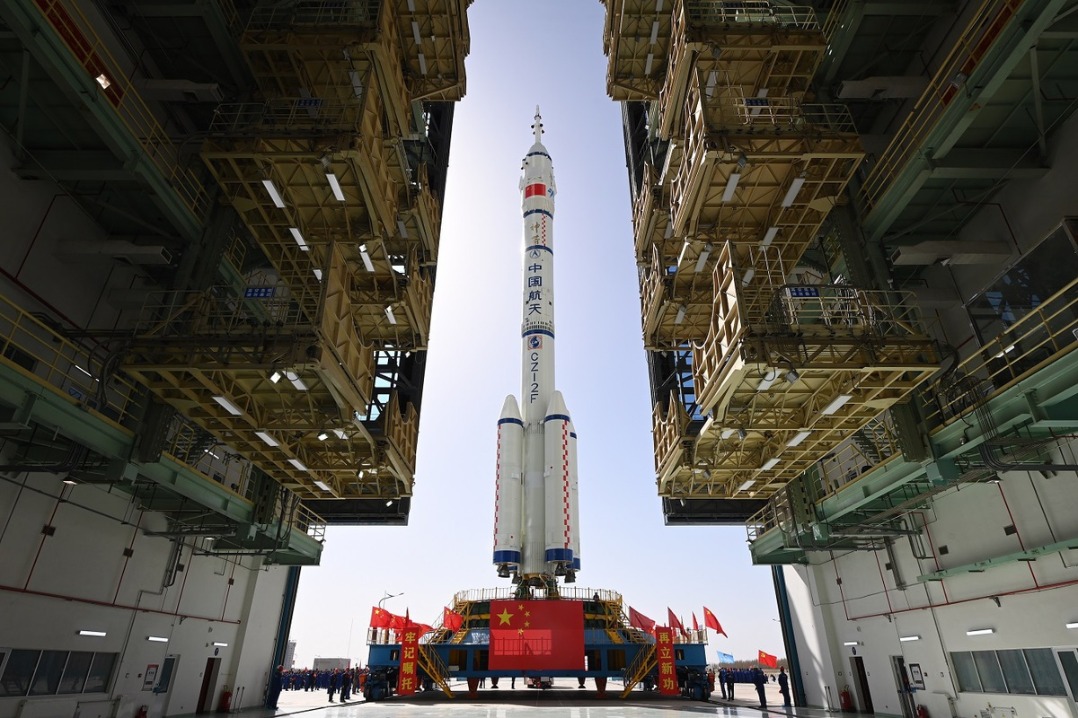Enough food for thought
China has good reasons to be confident about food security in the future
By HU BINGCHUAN | China Daily Global | Updated: 2020-10-21 07:54

China's food security will enter a new stage during the 14th Five-Year Plan (2021-25) period when people's rising demand for nutrition and higher-level food consumption needs to be met. That means more healthy and customized foods will be in higher demand.
As China promotes a new-type of industrialization, urbanization and agricultural modernization and makes advancements in information and communications technology, its agricultural productivity will increase and the new type of productivity will act as a catalyst in the restructuring of productive relations during the 14th Five-Year Plan period. As such, rural land, agricultural organizations and supporting systems will all undergo major changes.
China is likely to strengthen its food security during the 14th Five-Year Plan period compared with the 13th Five-Year Plan (2016-20) period.
First, as China's population and per capita food consumption both approach their peak, people's overall consumption of food and other agricultural products are likely to stabilize over the next five years. Although the country's population is not expected to see any drastic change in the next five years, the Engel coefficient may decrease thanks to people's increasing incomes. And with other factors remaining constant, the consumption of meat and seafood, too, is expected to peak in the next five years in line with the food consumption trend in developed countries.
The swine flu outbreak in 2018 had a negative impact on China's meat consumption, but since the pig farming sector has recovered, pork consumption is likely to pick up, and overall meat consumption is expected to peak soon. Once this happens, food and agricultural consumption will stabilize.
More importantly, the country's aging population, expected to reach 300 million in the next five years, will exceed 20 percent of the total population by 2025. While an aging population means lower food consumption, the demand for diverse diets will increase, not least because of people's rising incomes-which in turn will decrease the ratio of food grains in overall food consumption. For instance, as more and more people are adopting a healthy lifestyle, fruit consumption has been increasing and food grain consumption simultaneously declining.
Second, the aging population in rural areas and increasing urbanization will help increase large-scale agricultural production leading to the stability of the agricultural sector. During the 14th Five-Year Plan period, the traditional agricultural production model of every rural household functioning as a self-sufficient unit will be replaced by a production model in which trading in the market is the core of the system. This will boost new production factors, including investment, technology and human resources. As a result, agricultural productivity will further improve.
The cost-benefit ratios of pig farming in 2018 were-12.6 percent for individual households,-2.8 percent for small-scale farmers, 2 percent for medium-sized farmers, and 2.87 percent for large farmers. Data show that large-scale and modernized animal husbandry business is more successful than family-run and small-scale livestock business. It is the same with farming. Transfer of land use rights, land leasing and trusteeship, and partnerships in modern agriculture will also help boost productivity. And without an increase in productivity, no new agricultural production model can develop.
However, agricultural product trade is expected to become more dynamic and diversified during the 14th Five-Year Plan period. For instance, the demand for sunflower seed oil, safflower seed oil and linseed oil, which were not high earlier, have been increasing in recent years. This has enriched the supply structure of edible oil and reduced China's dependence on palm and soybean oil, which are imported. Given the different types and sources of agricultural imports, greater security is needed in this area.
And third, agricultural productivity will further increase with more supporting policies. China has the world's largest stock of grains. UN Food and Agriculture Organization data show China's rice stock for 2020-21 is 100 million metric tons-55.1 percent of the world's total rice stock of 182 million tons-and wheat stock 139 million tons-48.7 percent of the world's total of 285 million tons.
Higher food grain stocks mean greater food security, but it also means more waste due to inefficient storage capability. In developed countries where grain storage is dominated by private owners, food grains are stored in modern silos. And since the consumption of rice and wheat in China is likely to decline during the 14th Five-Year Plan period, we need to change the current storage mechanism.
China's agricultural product market is the largest in the world, and its highly efficient logistics system has facilitated fast conveyance over long distances. For example, it takes only 48 hours to transport vegetables from the southernmost Hainan province to the northernmost Heilongjiang province even in winter, which gives Chinese consumers access to abundant agricultural products.
Food security may no longer be a problem for China, but it is still a matter of public concern. So the government has made food a public good, and established a food storage and logistics system with Chinese characteristics. And during the 14th Five-Year Plan period, the authorities are expected to make the system more efficient. Food security is essential for a country, so even when a country has enough food stocks, it needs to take measures against possible risks. But China has good reasons to be confident about food security.
The author is a researcher of Rural Development Institute at the Chinese Academy of Social Sciences. The author contributed this article to China Watch, a think tank powered by China Daily. The views do not necessarily reflect those of China Daily.























